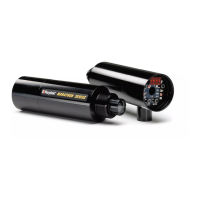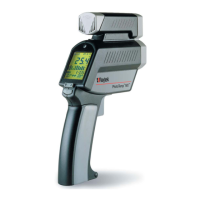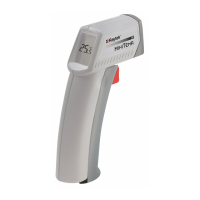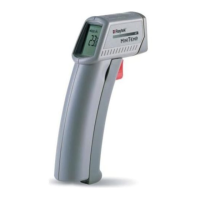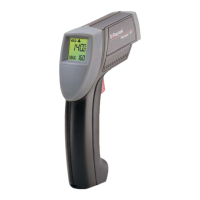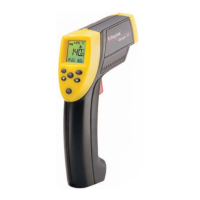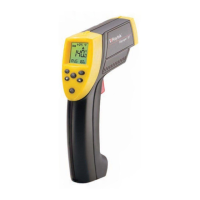Basics
24 Rev. D7 Jul 2017 Marathon MM
4 Basics
4.1 Measurement of Infrared Temperature
Everything emits an amount of infrared radiation according to its surface temperature. The intensity of
the infrared radiation changes according to the temperature of the object. Depending on the material
and surface properties, the emitted radiation lies in a wavelength spectrum of approximately 1 to 20
µm. The intensity of the infrared radiation (”heat radiation”) is dependent on the material. For many
substances this material-dependent constant is known. It is referred to as ”emissivity value”, see section
12.2 Typical Emissivity Values, page 84.
Infrared thermometers are optical-electronic sensors. These sensors are able to detect ”radiation of
heat”. Infrared thermometers are made up of a lens, a spectral filter, a sensor, and an electronic signal
processing unit. The task of the spectral filter is to select the wavelength spectrum of interest. The sensor
converts the infrared radiation into an electrical signal. The signal processing electronics analyze the
electrical signals and convert it into a temperature measurement. As the intensity of the emitted infrared
radiation is dependent on the material, the required emissivity can be selected on the sensor.
The biggest advantage of the infrared thermometer is its ability to measure temperature without
touching an object. Consequently, surface temperatures of moving or hard to reach objects can easily be
measured.
4.2 Emissivity of Target Object
Determine the emissivity of the target object as described in appendix 12.1 Determination of Emissivity,
page 84. If emissivity is low, measured results could be falsified by interfering infrared radiation from
background objects (such as heating systems, flames, fireclay bricks, etc. close beside or behind the
target object). This type of problem can occur when measuring reflecting surfaces and very thin
materials such as plastic films and glass.
This measuring error can be reduced to a minimum if particular care is taken during installation, and
the sensing head is shielded from these reflecting radiation sources.
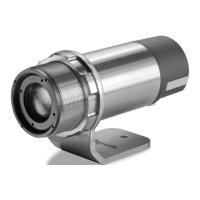
